#diprotodontia
Text

A Lumholtz's tree kangaroo (Dendrolagus lumholtzi) in Yungaburra, Queensland, Australia
by Gregory "Slobirdr" Smith
#lumholtz's tree kangaroo#tree kangaroos#macropods#marsupials#dendrolagus lumholtzi#dendrolagus#macropodidae#diprotodontia#marsupialia#mammalia#chordata#wildlife: australia#wildlife: oceania
55 notes
·
View notes
Photo
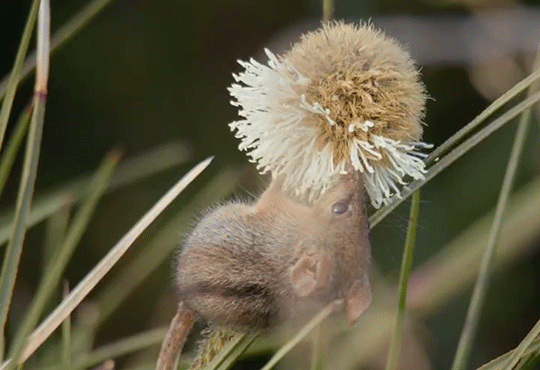


The honey possum, also called a noolbenger, is the only flightless animal that feeds exclusively on nectar and pollen. As such it’s an important pollinator in the grasslands of southern Australia.
Grassland Films
#honey possum#noolbenger#australia#grasslands#mammalia#diprotodontia#y'all should go to that wiki page there's uhh.. a really great illustration.
12K notes
·
View notes
Text

It’s Fossil Friday! Standing about 6 ft (1.8 m), Diprotodon australis is one of the largest marsupials to have ever lived. Distantly related to living wombats, this massive herbivore was common throughout Australia until the end of the last Ice Age some 25,000 years ago. The specimen on display at the Museum was found in 1893. Visiting this weekend? You can see this fossil in the Hall of Primitive Mammals!
Photo: E. Louis/ © AMNH
#science#fossil#amnh#museum#paleontology#nature#natural history#animals#diprotodontia#mammal#mammals#fossil friday#fact of the day#cool animals#animal facts#marsupial#wombat
466 notes
·
View notes
Text
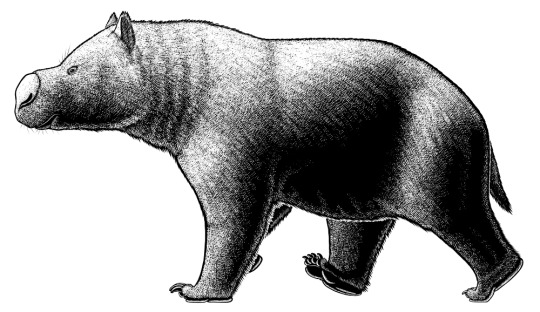
Diprotodontids were large herbivorous marsupials distantly related to modern wombats and koalas, with some species reaching body sizes comparable to rhinos.
Ambulator keanei here was a mid-sized example, closer to bear-sized at around 1m tall at the shoulder (~3'3"). It lived in South Australia during the Pliocene, about 3.9-3.6 million years ago, at a time when the climate was becoming drier and the local habitat was shifting towards open grasslands – and so it was was one of the first diprotodontids known to have specialized its limb anatomy for more efficient long-distance walking.
A bone in its wrist was modified into a heel-like structure, and skin impressions show large cushioning fleshy pads on the undersides of its feet. Its feet were also rotated to bear weight mainly on the outside edges, similar to the condition seen in some ground sloths, and its fingers and toes appear to have been held raised up off the ground while walking.
———
NixIllustration.com | Tumblr | Twitter | Patreon
#science illustration#paleontology#paleoart#palaeoblr#ambulator#diprotodontid#diprotodontia#marsupial#mammal#art#these legs are made for walkin' so that's just what they'll do
287 notes
·
View notes
Text
Taxonomy Tournament: Mammals


Dasyuromorphia. This order is made up of carnivorous marsupials, including quolls, numbats, and the Tasmanian devil.
Diprotodontia. This order is the most specious order of marsupials, containing, among others, kangaroos, koalas, wombats, and sugar gliders.
#animals#biology#polls#poll tournament#zoology#tasmanian devils#numbats#mammals#tetrapods#kangaroos#koalas#wombats#Dasyuromorphia#Diprotodontia#0x10v0x6f
42 notes
·
View notes
Text
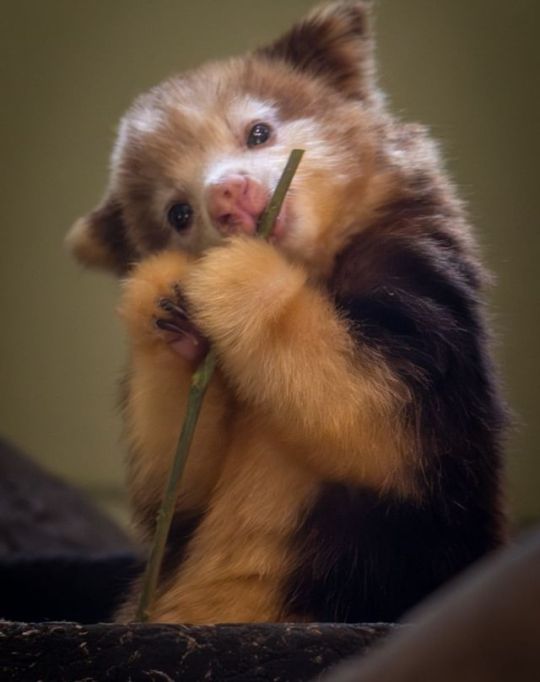
Matschie's Tree Kangaroo
#matschies tree kangaroo#tree kangaroo#Dendrolagus matschiei#Marsupialia#Diprotodontia#Macropodidae#Dendrolagus#upl
16 notes
·
View notes
Text
All set! Next week, I'm a koala care volunteer! As much as I'm here to help them (and cute as they are), I'm mostly going to improve my ecology skills as well as have something impressive on my resumé. So I'm actually excited to work in the food nursery and not with direct koala care. That's what I wanted in the first place! It's still helping the fluffy fellas after all. There were only a few photo I could take for legal reasons, but here they are!;
The souvenirs shop;


The only Koalas I could take photos of are the ones with hip dysplasia. The carer offered to let me in, but I didn't want to disturb them.



And finally:
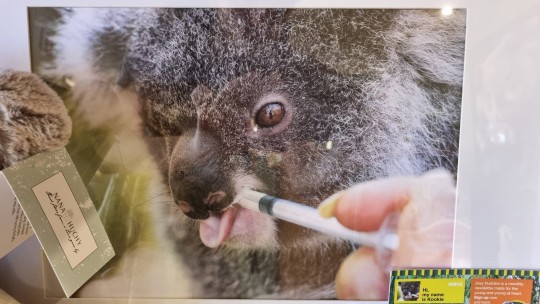
Blep
#phascoloarctus cinereus#koala#phascoloarctus#diprotodontia#marsupial#chordates#mammal#wildlife care#wildlife rehab#conservation#ecology#animal#australian wildlife#australia#wildlife#hip dysplasia#wildlife hospital#eucalyptus#trees#blep#cute#cute animals#synapsid
8 notes
·
View notes
Text
Uncharismatic Fact of the Day
Not quite a wallabie, not quite a kangaroo...must be a wallaroo! Size-wise these macropods, also known as euros, are right in between wallabies and kangaroos, but they're actually an entirely different group. The name comes from the Australian Aboriginal Dharug name walaru.

(Image: A common wallaroo (Macropus robustus) by Ron Knight)
If you like what I do, consider leaving a tip or buying me a ko-fi!
#wallaroo#Diprotodontia#Macropodidae#macropods#marsupials#australian marsupials#mammals#uncharismatic facts
69 notes
·
View notes
Text

Chunia
Chunia — примітивний ектоподонтид. Це була особлива група кайнозойських австралійських кускусових, які, можливо, були спеціалізованими насіннєїдами. Ектоподонтиди, яких спочатку вважали однопрохідними, мали коротку морду, великі, спрямовані вперед очі і найбільш незвичайні та складні зуби серед усіх сумчастих. Chunia, найпримітивніший з ектоподонтидів, мав корінні зуби, які були простішими, ніж у інших ектоподонтидів,…
Повний текст на сайті "Вимерлий світ":
https://extinctworld.in.ua/chunia/
#chunia#australia#marsupialia#oligocene#mammalia#metatheria#diprotodontia#paleoart#paleontology#prehistoric#art#illustration#ua#animals#digital art#animal art#science#daily#extinct#палеоарт#палеонтологія#fossils#article#ukraine#ukrainian#україна#мова#українська мова#арт#український tumblr
7 notes
·
View notes
Text
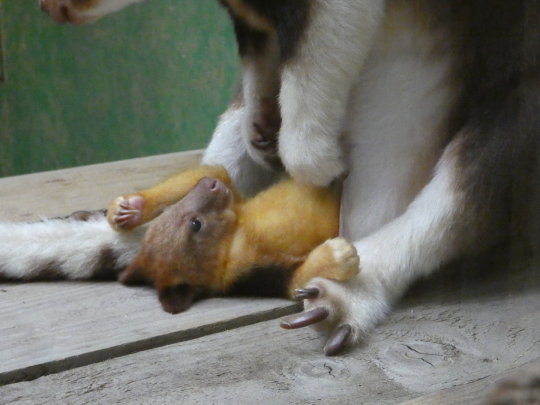
Goodfellow's Tree Kangaroo (Dendrolagus goodfellowi)
@ MagpieGoose
#iicraft505#animals#goodfellow's tree kangaroo#marsupial#macropodidae#diprotodontia#marsupialia#mammal#mammalia
2 notes
·
View notes
Photo


I saw this at the zoo, have to share it here.
28/05/22
#koala#Phascolarctos cinereus#Phascolarctos#Phascolarctidae#Diprotodontia#Marsupialia#Theria#Mammalia#Vertebrata#Chordata#cute#cute animals
9 notes
·
View notes
Photo

A juvenile Yellow-Footed Rock Wallaby (Petrogale xanthopus) in Flinders Rangers, South Australia
by Julian Robinson
#yellow footed rock wallaby#wallabies#marsupials#macropods#Petrogale xanthopus#petrogale#macropodidae#Diprotodontia#marsupialia#mammalia#chordata#wildlife: south australia#wildlife: australia
16K notes
·
View notes
Text
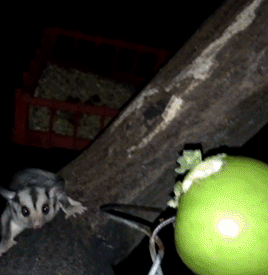
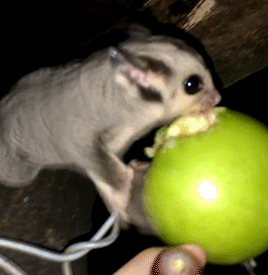
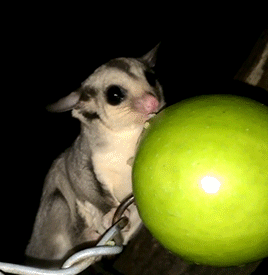
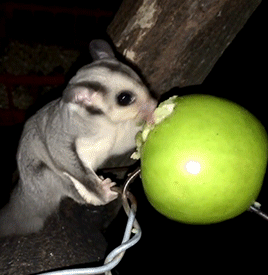
sugar glider VS 🍏
#australia#sugar glider#mammalia#marsupialia#diprotodontia#request#inqzok#it was really hard to find footage of wild ones ;o;
292 notes
·
View notes
Note
thank you for recognizing the thylacoleo by skeleton alone she is my favorite animal that ever lived. i was so happy seeing ur tags. idk who you are but for one brilliant moment we were joined in thylacoleo carnifex , peace and love and giant marsupials forever ❤️❤️❤️❤️👍👍
PEACE AND LOVE AND THYLACOLEO CARNIFEX ON CENOZOIC EARTH
in all seriousness though i love bizarre dentition so i went down the t. carnifex rabbit (wombat?) hole a while ago and i have to agree she is perfect. they basically evolved garden shears in their mouths! probably one of the most devastating biters of all time. and those long sloth forearms? those semi-opposable giant-clawed thumbs???? what’s not to love about her?
i do also enjoy the smaller thylacoleo species as well. mini murder marsupials :3
#im normally a sabercat/false sabercat girlie but how could i NOT fall in love with those teeth#thylacoleo carnifex#thylacoleonidae#diprotodontia#beastposting
0 notes
Text

Side view of skull of Thylacoleo carnifex. From On the fossil mammals of Australia. - Part II. Description of an almost entire skull of the Thylacoleo carnifex, Owen, from a freshwater deposit, Darling Downs, Queensland
#thylacoleo carnifex#animals#mammals#marsupials#thylacoleo#s o: australidelphia#o: diprotodontia#s o: vombatiformes#f: thylacoleonidae#g: thylacoleo#sp: t. carnifex#palaeontology
31 notes
·
View notes
Text
Taxonomy Tournament: Mammals


Diprotodontia. This order is the most specious order of marsupials, containing, among others, kangaroos, koalas, wombats, and sugar gliders.
Microbiotheria. This order contains only one species, the Monito del monte, a small tree-dwelling marsupial that lives in southwestern South America
#animals#biology#polls#poll tournament#zoology#kangaroos#koalas#wombats#mammals#tetrapods#Monito del monte#Diprotodontia#Microbiotheria#0x6fv0x90#animal tournament#Animal Tournament Round 1
30 notes
·
View notes